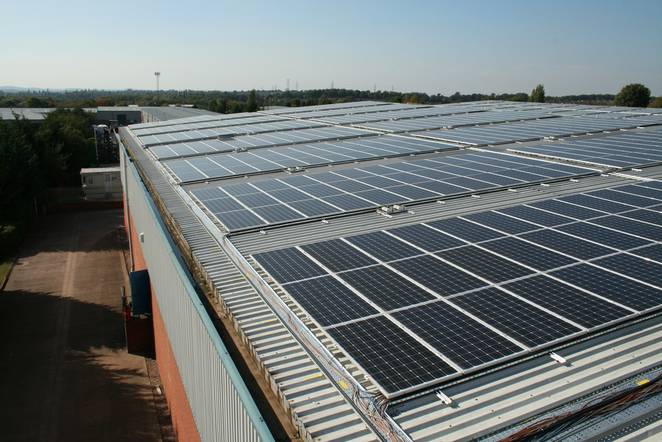Wednesday, 07/01/2026 | 11:43 GMT+7
When we think of antennas we mainly think of the type that transmit and receive radio waves, letting us listen to radio stations in our car or watch TV in our homes, but in this case the researchers are using the term to describe a new thin film material that captures more of the light spectrum, converting it into wavelengths of light that solar cells can convert into electricity.
Currently, most silicon solar cells are good at converting light wavelengths from 600 to 1,000 nanometers (nm), but not as good from 350 to 600 nm, also known as the blue part of th. This keeps solar cells from being very efficient at converting light into electricity -- most solar cells on the market hit an efficiency of between 11 and 25 percent.
The lower efficiencies mean that it takes years for homeowners and businesses to recoup the money they invest in solar power systems. If the efficiencies were higher, that time for return on investment would be slashed, people would be able to cover more of their power loads with renewable energy and solar power would be much more enticing to people and corporations.
Many scientists are working on building better solar cells, but researchers at the University of Connecticut wanted to figure out how to boost the efficiency of the technology we already have. Thus, the antenna.
As Phys.org reports, Challa V. Kumar, Ph.D and his team "built an antenna that collects those unused blue photons and converts them to lower energy photons that the silicon can then turn into current."

"Many groups around the world are working hard to make this kind of antenna, and ours is the first of its kind in the whole world," Kumar said.
The antenna is made by using organic dyes that are excited by light. The dyes then relax and emit more silicon-friendly photons. The dyes are embedded in a hydrogel that keeps them separated but densely packed. After being warmed up and cooled down, it creates a thin pink film that can be coated on top of solar cells, potentially doubling the efficiency.
Even better is that the materials are all biological and non-toxic -- even edible -- and the chemistry to make the film is simple.
"It can be done in the kitchen or in a remote village. That makes it inexpensive to produce," said Kumar.
The researchers are already working with a Connecticut company to figure out how to apply the coating to commercial solar cells. The team is also looking at how the same hydrogel technology can be used to improve drug delivery within the human body and white LEDs.
Anh Tuan








 Webinar 2: “Financial Support for Energy Efficiency Enterprises – Opportunities and Challenges”
Webinar 2: “Financial Support for Energy Efficiency Enterprises – Opportunities and Challenges”
 Capacity Building for Program Implementing Entity
Capacity Building for Program Implementing Entity
 Vietnamese enterprises achieve green growth and cut costs through energy efficiency
Vietnamese enterprises achieve green growth and cut costs through energy efficiency
 Enhance Energy Efficiency Knowledge for Managers of Cement Industrial Enterprises
Enhance Energy Efficiency Knowledge for Managers of Cement Industrial Enterprises
 Capacity building for participating financial institutions in Ho Chi Minh City
Capacity building for participating financial institutions in Ho Chi Minh City
 Strengthening capacity for energy management officers of local government agencies
Strengthening capacity for energy management officers of local government agencies
 Steel Enterprises Saving Energy and Enhancing Competitiveness
Steel Enterprises Saving Energy and Enhancing Competitiveness